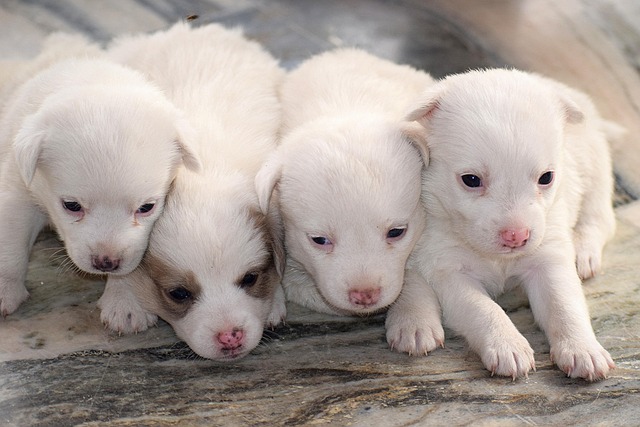
What is glaucoma in a dog?
You might notice your dog squinting more at mealtime or avoiding bright sunlight—these small changes could be early signs of a serious eye condition.
Picture your Great Dane eyeing their food bowl—feeding big dogs isn’t just about quantity; it’s about quality. Let’s explore science-backed feeding strategies with real pet parent stories, blending nutrition science with practical tips for happy, healthy giants.
Body size dictates basic feeding needs. A 100-pound Labrador needs 1,500–2,000 calories daily, while a 150-pound Mastiff may require 3,000+. My neighbor’s Great Dane, Zeus, eats 4 cups of kibble split into two meals. "Caloric needs vary by activity—adjust for hikes or couch days," her vet says.
Growth stage matters immensely. Puppy large breeds like German Shepherds need controlled calcium intake to prevent bone issues. My friend’s Shepherd pup, Bella, ate a specially formulated large-breed puppy food. "Excess calcium can cause hip dysplasia," a nutritionist warns.
Protein source and quality count. Look for AAFCO-certified foods with named meats (like "chicken" vs. "meat meal"). Zeus thrives on a salmon-based formula. "High-quality protein supports muscle development in big dogs," my vet notes.
Feeding frequency reduces bloat risk. Large breeds should eat 2–3 small meals daily. When I fed my Labrador, Max, once a day, he developed gastric torsion. "Multiple meals prevent overstretching the stomach," a vet surgeon says.

Joint support nutrients are essential. Add glucosamine and chondroitin to diets. Bella’s food includes these supplements—now her hips stay flexible at 8 years old. "Large dogs put extra pressure on joints," a rehab vet explains.
Avoid common dietary pitfalls. Table scraps can cause obesity; my neighbor’s Mastiff gained 20 pounds from treats. "Stick to dog-safe snacks like carrots or green beans," a trainer advises.
Raw feeding considerations for large breeds. If choosing raw, ensure balanced nutrition. My Aussie mix, Koda, eats a vet-formulated raw diet. "Raw bones must be safely sourced—avoid cooked bones that splinter," a nutritionist warns.
Local pet food regulations apply. In the EU, pet foods must list ingredients by weight; in the US, AAFCO sets nutritional standards. "Check labels for compliance—especially for imported brands," a lawyer friend notes.
Hydration needs for big dogs. Max drinks 100 ounces daily—keep water bowls accessible. "Large breeds lose more moisture through panting," my vet says. Monitor urine color: pale yellow means proper hydration.
Senior large dogs need dietary adjustments. At 12, Max switched to a low-calorie, high-fiber food. "Aging metabolisms slow down—prevent weight gain," his vet says. Joint supplements become even more critical.
Portion control tools help. Use a kitchen scale instead of guesswork. When I eyeballed Zeus’s portions, he gained weight. "Large breed bodies process food differently—precision matters," a trainer notes.
Signs of proper nutrition: shiny coat, firm stool, active energy. If your dog’s coat is dull or they’re lethargic, consult a vet. "Nutrition affects every aspect of health," my vet stresses.
Feeding large breeds is a balance of science and observation. For Zeus, it’s about high-quality protein and joint support; for Max, portion control and hydration. "Every big dog is unique—adjust their diet with vet guidance," my nutritionist says. With the right approach, your large breed thrives from puppyhood to golden years.

You might notice your dog squinting more at mealtime or avoiding bright sunlight—these small changes could be early signs of a serious eye condition.

Let’s set the scene: It’s a sweltering Phoenix afternoon—105°F outside—and you rushed your 2-year-old Lab mix, Cooper, on a quick walk to “get it over with.”

Let’s get real: You’re in your Miami apartment, watching your 3-year-old Corgi, Loki, struggle to climb the stairs to your second-floor unit.

Many dog owners brush off occasional scratching as just “dog behavior,” but persistent itching often signals something more—like a food allergy.

You might first notice your dog scratching more than usual—chewing at their paws until the fur looks thin, or rubbing their face against the couch nonstop.

Let’s be real: You’re standing in your Chicago apartment, watching your 3-year-old Beagle, Max, huff and puff just to climb onto the couch.